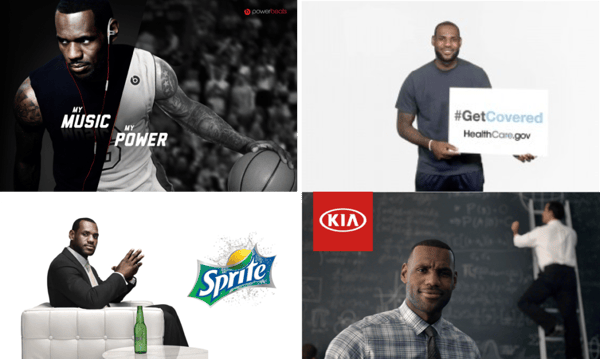9 Cyber Monday Emails that Really Work
It's that time of year again! Black Friday and Cyber Monday are right around the corner. Businesses are trying to figure out how get the most out of...

Brands have always leveraged celebrity influencers. In fact, celebrities appear in roughly one-fifth of ads today. This is a common marketing method because it serves as a way of transferring the popularity, style, personality, and like-ability of a particular celebrity to your brand or product.
Despite their frequent use, it's debatable how much celebrity endorsements actually work to drive sales or stock prices.

There is a risk that the celebrity you align your product with may damage your brand instead of effectively promoting it.

Plus, celebrity endorsements are costly, which is undesirable in an environment where marketers are increasingly asked to prove the value of every dollar spent.

Thanks to social media and the "long tail" model, the line between "celebrity" and "social media celebrity" is blurring with each passing day. Termed "micro-influencers," these social media celebrities are getting a lot of attention lately - especially as brands begin planning their marketing for 2017.
Typically anyone with 10,000 - 150,000 followers on their blog, Twitter, or Instagram account qualifies as a micro-influencer. Micro-influencers are appealing because they cater to niche audiences, unlike celebrities. While a product or brand may get lost in a celebrity's message, the micro-influencer has typically built their audience around one consistent topic. This means your message may not get as much reach, but it will be targeted to a more relevant audience. Plus, because a micro-influencer isn't a "real" celebrity, the marketing message and product endorsement will come across as more authentic to your audience.
Incorporating micro-influencer campaigns into your marketing plan is the easy part. How do you know if you're getting a return on your investment (budget and effort)?
Consider steps one and three from the previous section. To gauge if your campaigns are effective, you need to understand where micro-influencers fit into your customers’ journey and have clear expectations for what you're looking to get from the partnership:
Adding micro-influencer campaigns to your marketing plan is not an exact science due to the number of variables involved. Therefore, it's critical to continually review the campaign metrics and adjust accordingly to ensure the maximum value for your investment. Most importantly, be realistic, take the time to understand how this tactic fits into your strategy and have a vision of what success looks like in mind.
Sign up for our monthly newsletter to receive updates.

It's that time of year again! Black Friday and Cyber Monday are right around the corner. Businesses are trying to figure out how get the most out of...

Another year down, which means it's time for marketers everywhere to shift from execution mode to evaluation mode.

Like many New Year’s resolutions, building a marketing content calendar is easy to start, but difficult to maintain. That's because life tends to get...